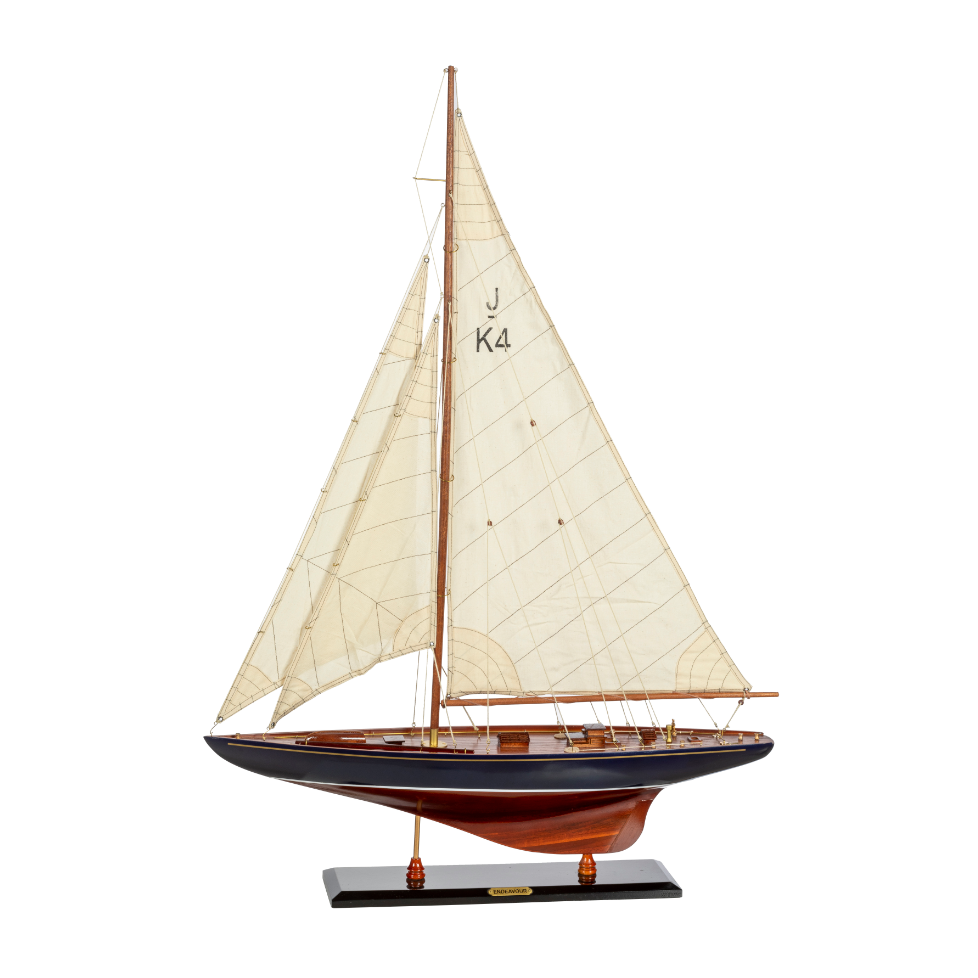- Out-of-Stock




The Endeavour (1934) was built to class J rules to sail in the 1934 America's Cup. She was commissioned by Sir Tom Sopwith and built by Camper & Nicholson in Gosport (England), who used aviation technology to give her more speed. Handcrafted sailing boat in wood. Packaging: Dismantled mast.
The Endeavour (1934) was built to class J rules to sail in the 1934 America's Cup. She was commissioned by Sir Tom Sopwith and built by Camper & Nicholson in Gosport (England), who used aviation technology to give her more speed. Handcrafted sailing boat in wood. Packaging: Dismantled mast.
The Rainbow (1934), built to class J rules, was designed by William Starling Burgess and launched in Rhode Island (USA) to defend the America's Cup against the "Endeavour". Sailing boat in hand painted wood. Packaging: Dismantled mast.
The Atlantic (1903) is a 54 m three-mast schooner designed by William Gardner for New York Yacht Club member Wilson Marsall. She won the emperor William II of Germany transatlantic Kaiser's Cup in 1905 setting a crossing record of 12 days, 4 hours and 1 minute.She ended her days as a Coast Guards training ship from 1941 to 1947, defore being broken...
The training ship Juan Sebastián Elcano (1929) It is a four-masted topsail, steel-hulled barquentine. Right now it is the third largest tall ship in the world and is the sailing vessel that has sailed the furthest. The name comes from the spanish explorer Juan Sebastián Elcano, the man who completed the first circumnavigation of the world and was the...
Innovative reproduction of a sailboat with a rustic finish. Solid wood hull. Sails made from metal.
The Optimist is a sailboat designed for novices in 1947 by the architect Clark Mills (Florida). Its lightweight and stable design, single-masted with a flat bottom, makes it simple to maneuver. Fully assembled model. Hand-painted and handmade from wood.
Reproduction of a model inspired by the sailing boat Pen Duick (1898), one of the boats used by the famous French navigator Eric Tabarly and designed by Scotsman William Fife. The name Pen Duick in Breton means "little black head", a term used to refer to the black-capped tit. Handcrafted in wood and hand painted.